Résumés Année 2011
"Molecular tectonics: design of enantiomerically pure helical tubular crystals with controlled channel size and orientation"
Mei-Jin Lin, Abdelaziz Jouaiti, Philippe Grosshans, Nathalie Kyritsakas and Mir Wais Hosseini, Chem. Commun., 2011, 47, 7635-7637 . (download.pdf)
Abstract: The combination of four enantiomerically pure organic tectons composed of rigid chiral backbone bearing two terminal pyridyl coordinating sites with ZnSiF6 behaving as an infinite pillar leads to the formation of tubular 2-D enantiomerically pure helical channels with controlled size and orientation.
 | 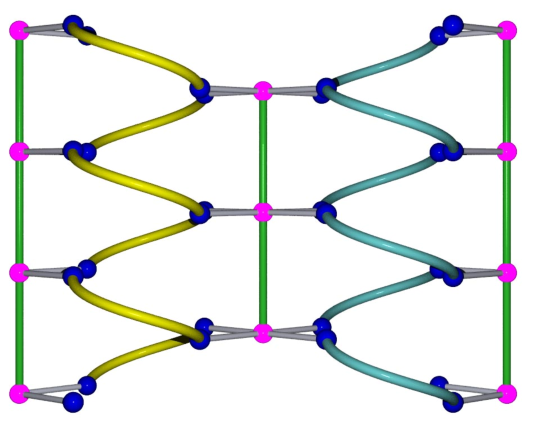 | 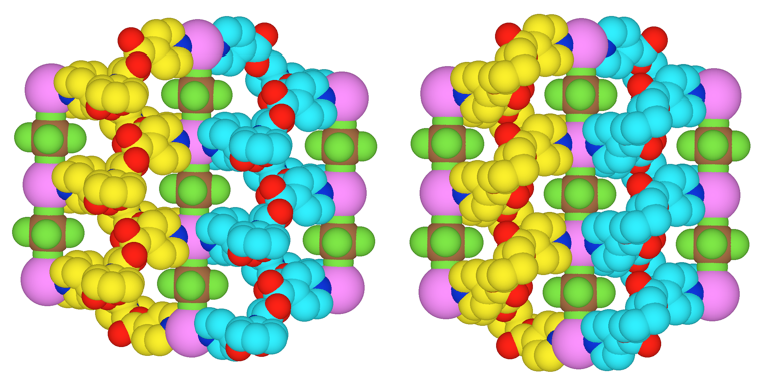 |
"From insertion of rhodium acetate paddlewheels into functionalized 7-azaindole hydrogen bonded dimers to infinite architectures"
Dmitry Pogozhev, Stéphane A. Baudron and Mir Wais Hosseini, Dalton Trans., 2011, 2011, 40, 7403 –7411.(download .pdf)
Abstract: In order to take advantage of the peculiar mode of interaction consisting in the combination of hydrogen and coordination bonding displayed by the 7-azaindole core towards tetraacetate paddlewheel type complexes, a series of new derivatives, bearing peripheral interacting sites at the position 3, have been prepared and their self-assembly into dimeric H-bonded species was established in the solid state. Furthermore, the heterochelate mode of binding was exploited both in the solid state and in solution using [Rh2(OAc)4] paddlewheel to generate discrete capped complexes resulting from the coordination of the pyridyl nitrogen atom to the axial position of the Rh(II) cations and hydrogen bonding between the pyrrolic NH and an oxygen atom of one of the equatorial acetate groups. The extension to infinite hybrid networks was achieved using derivatives bearing self complementary H-bond donor and acceptor groups such as carboxylic moiety.
 | 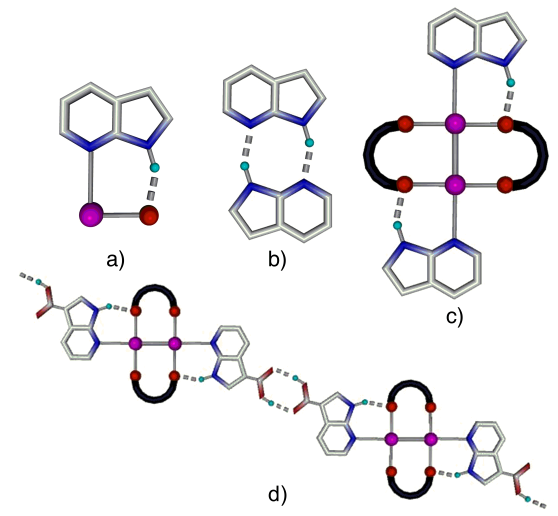 |  |
 |
"Synthesis and structural analysis of porphyrin based polynucleating ligands bearing 8-methoxy and 8-allyloxy quinoline units"
Fabrice Eckes, Emmanuel Deiters, Adrien Métivet, Véronique Bulach and Mir Wais Hosseini Eur. J. Org. Chem., 2011, 2531-2541. (download.pdf)
Abstract: Synthetic strategies and procedures leading to a series of new porphyrin derivatives bearing 2, 3 or 4 8-hydroxyquinolinyl groups are reported. The solid state structures of the majority of the reported porphyrin derivatives were investigated by X-ray diffraction on single-crystals. The strategy based on the condensation of the carboxylic acid derivative of the methyl protected 8-hydroxyquinoline with pure α4, α2β2 and αβαβ atropoisomers of the ortho-tetraaminophenyl porphyrin precursors in the presence of HBTU/DMAP leads to the formation of the corresponding tetrasubstituted derivatives in good yields (45-68 %). Unfortunately, the final deprotection step leading to the desired chelating compounds was unsuccessful. The replacement of the methyl group by the bulky allyl group afforded only the di- substituted and tri-substituted α4 atropoisomer in 17 and 50 % yields respectively. Due to steric reasons, no trace of the tetrasubstituted derivative α 4 atropoisomer was detected. However, the coupling reaction with the αβαβ atropoisomers of the ortho-tetraaminophenyl porphyrin precursor afforded the tetrasubstituted atropoisomer in 49 % yield. Again, the deprotection step appeared as problematic and led to non separable mixtures. Finally, the desired α4 atropoisomer bearing four 8-hydroxyquinolinyl groups could be obtained upon direct condensation of α4 atropoisomer of ortho-tetraaminophenyl porphyrin precursor with 8-hydroxy-7-quinoline carboxylic acid in the
presence of activating agents (HBTU and DMAP).
 | 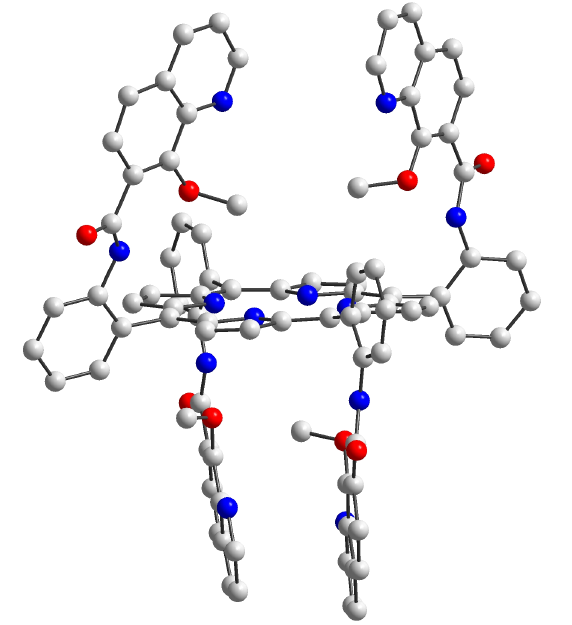 | 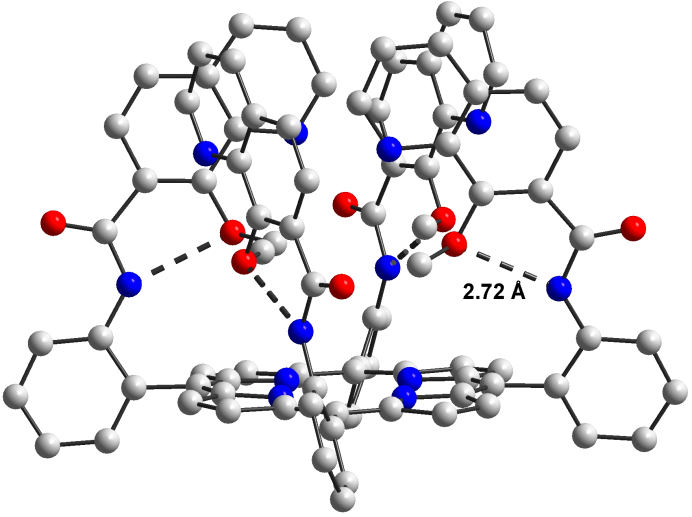 |
"An oscillating molecular turnstile"
Thomas LANG, Ernest GRAF, Nathalie KYRITSAKAS, and Mir Wais HOSSEINI, Dalton, 2011, 40, 5244-5248.(download.pdf)
Abstract:
An oscillating molecular turnstile based on a stator composed of a porphyrin core bearing two trans coordinating pyridyl units at the meso positions and a rotor equipped with pyridyl group was designed. Whereas, in solution, the rotor freely rotates around the stator, in the presence of silver cation behaving as an effector, the system oscillates between two stations. The oscillatory movement may be frozen upon cooling at -70 °C generating thus the closed state of the turnstile. The switching of the system between the open and closed states may be achieved using an external stimulus such as addition of Et4NBr.
 | 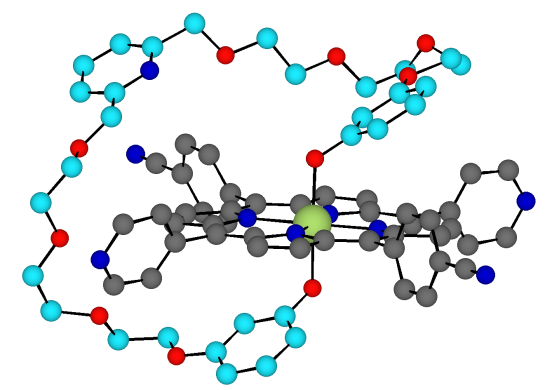 | 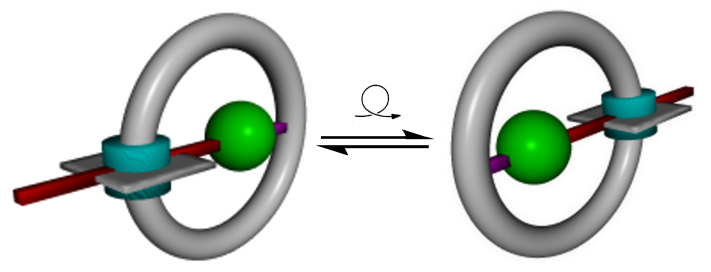 |
"Porphyrin Based Switchable Molecular Turnstiles"
Aurélie GUENET, Ernest GRAF, Nathalie KYRITSAKAS, and Mir Wais HOSSEINI, Chem. Eur. J., 2011, 17, 6443–6452. (download.pdf)
Abstract: The design, synthesis and structural characterization in solution of two new molecular turnstiles based on Sn-porphyrin derivatives are described. The system is composed of a stator (5-(4-pyridyl)-10,15,20-triphenylporphyrin), a hinge (Sn(IV)) and a rotor (handle equipped with 2,6-pyridinedicarboxamide as tridentate coordinating site or its Pd(II) complex). The presence of interaction sites both on the stator and the rotor offers the possibility of switching between an open state (free rotation of the handle around the porphyrin) and a closed state (blockage of the rotation) by either establishment of H-bonds between the stator and the rotor or by the simultaneous binding of Pd by both coordinating groups.
 |  | 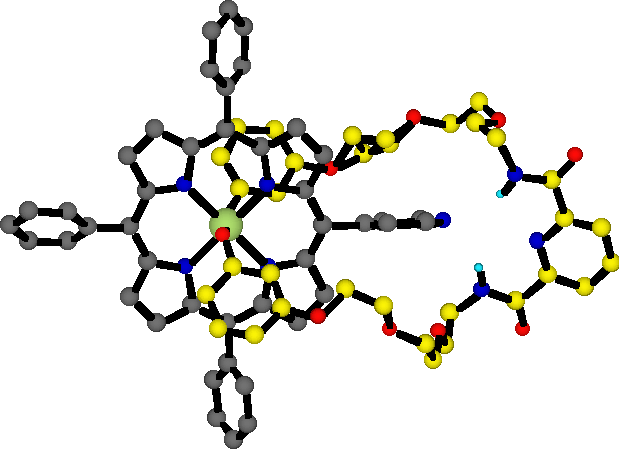 |
"Porphyrin-based tectons in molecular tectonics"
Véronique BULACH and Mir Wais HOSSEINI, "Handbook of Porphyrin Science", Handbook of Porphyrin Science 2011, 13, 299-391 (see series)
Abstract: In this chapter, we discuss the use of porphyrin-based tectons in molecular tectonics. Many periodic architectures based on porphyrin derivatives as building blocks are considered as molecular networks and analyzed and described through the eyes of the approach called molecular tectonics. This chapter is limited to reported architectures in the crystalline phase characterized by X-ray diffraction methods on
single crystals. Furthermore, since the chapters by Suslick and coworkers in the Porphyrin Handbook already covered systems published prior to 1999, this chapter shall only analyze the 2000-onward period. It is worth mentioning that several review articles by Suslick and coworkers, Goldberg et al, Drain et al., Guilard and coworkers, Satake and Kobuke, Harvey and Gunter have appeared since the year 2000.
In this not exhaustive review centered on infinite networks, two types of intermolecular interactions will mainly be considered. Whereas the first part covers porphyrin-containing hybrid architectures based on coordination bonding which is the most used type of interaction, the second part describes the formation of networks based on the formation of hydrogen bonds.
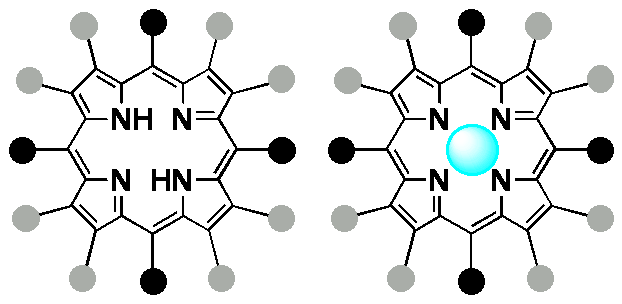 |  |  |
"La tectonique moléculaire : Des complexes hôte-substrat aux architectures complexes"
Mir Wais HOSSEINI, l'Actualité Chimique., 2011, 348-349, 36-40. (download.pdf)
Abstract : Molecular tectonics, an approach at the intersection between supramolecular chemistry and molecular solid state chemistry, deals with the formation of molecular networks, large size periodic architectures, in the crystalline phase. This approach exploits iterative recognition events between complementary tectons (active construction units) for the formation of complex architecture by self-assembly processes. This approach, by considering a crystal as a hypermolecule, not only permits to analyse and describe crystals as molecular networks, but in addition, allows to conceive molecular networks by the design of tectons and assembling nodes which are recognition motifs between them.
Résumé : La tectonique moléculaire, une approche à l’intersection de la chimie supramoléculaire et de la chimie moléculaire de l’état solide, s’intéresse à la formation de réseaux moléculaires, architectures périodiques de grande taille, à l’état cristallin. Elle utilise des processus itératifs de reconnaissance moléculaire entre tectons complémentaires (briques de construction actives) pour générer des architectures complexes par auto- assemblage. Cette approche, en considérant le cristal moléculaire comme une hypermolécule, permet non seulement d’analyser et de décrire les cristaux en termes de réseaux, mais également de concevoir des réseaux moléculaires par la conception de tectons et nœuds d’assemblage qui sont des motifs de reconnaissance entre les tectons.
"Open and closed states of a porphyrin based molecular turnstile"
Thomas LANG, Ernest GRAF, Nathalie KYRITSAKAS and Mir Wais HOSSEINI, Dalton., 2011, 40, 3517-3523 .(download.pdf)
Abstract: The molecular turnstile 1 composed of a stator based on a Sn(IV)-porphyrin bearing two sets of monodentate coordinating sites (pyridyl and benzonitrile) and a handle bearing a 2,6-pyridinediamide moiety as a tridentate unit is synthesised. In the absence of metal behaving as a blocking agent, the handle freely rotates around the stator (open state). In the presence of Pd(II), the closed state of the turnstile 1-Pd resulting from the simultaneous binding of the metal centre by both the dianionic tridentate site and one of the two pyridyl units is generated. The reaction of 1-Pd with the organometallic 2,6-diphenylpyridine Pt(II) complex 11 leads to the heterotrinuclear (Pt, Sn, Pd) species 13 resulting from the binding of the platinum complex by 1-Pd.
 | 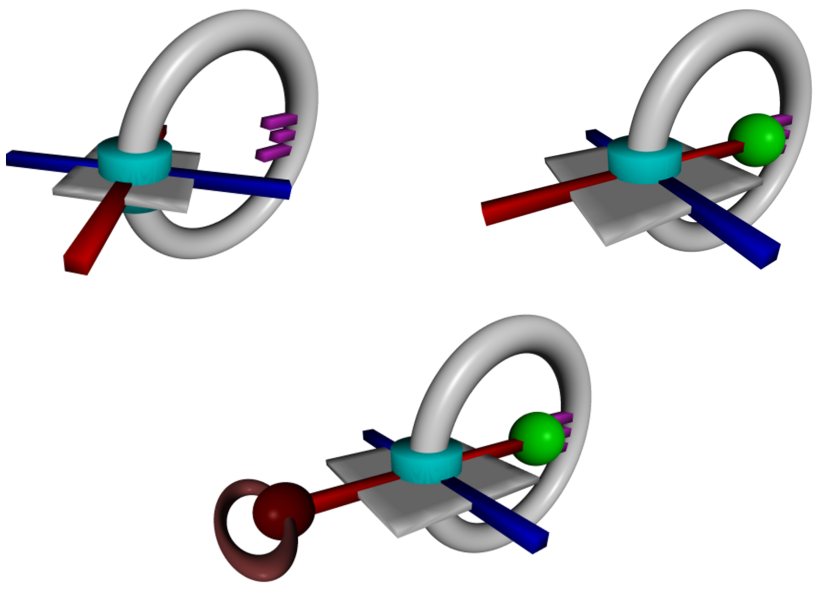 |
"Molecular tectonics: control of interpenetration in cuboid 3-D coordination networks"
M-J. LIN, A. JOUAITI, N. KYRITSAKAS and M. W. HOSSEINI CrystEngComm, 2011, 13, 776-778. (download.pdf)
Abstract: By imposing a two-fold interpenetration through the use of ZnSiF6 forming a linear pillar, combinations of rigid tectons bearing two divergently oriented pyridyl units interconnected either by a naphthyl or a biphenyl spacer with ZnSiF6 leads to stable porous crystalline materials.
 |  |  |
"Molecular tectonics: control of packing of luminescent networks formed upon combining bisamidinium tectons with dicyanometallates"
P. DECHAMBENOIT, S. FERLAY, N. KYRITSAKAS and M. W. HOSSEINI CrystEngComm, 2011, 13, 1922-1930.(download.pdf).
Abstract: The combination of bisamidinium dicationic tectons [X-2H+] (X = 2-4) bearing four alkyl chains of variable lengths with linear [M(CN)2]- (M = Ag or Au) anions leads to the formation of luminescent crystalline materials. The recognition mode, the connectivity patterns between cationic and anionic tectons leading to the formation of either 1- or 2-D networks as well as the packing of the latter are presented and discussed.
 | 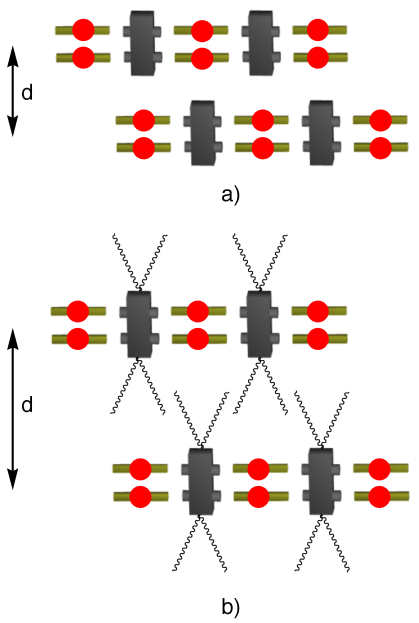 | 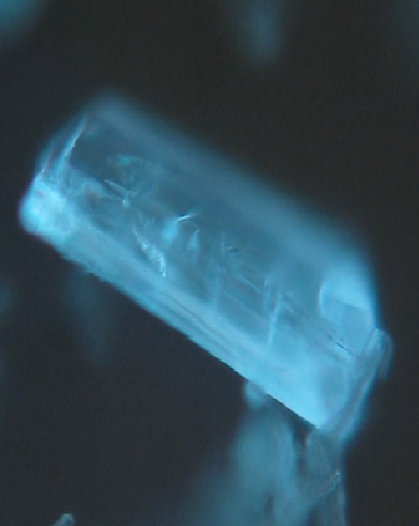 |
"From tectons to luminescent supramolecular ionic liquid crystals"
P.DECHAMBENOIT, S. FERLAY, B. DONNIO, D. GUILLON and M. W. HOSSEINI, Chem. Commun., 2011, 47, 734-736 .(download.pdf).
Abstract: New phosphorescent and room-temperature liquid-crystalline materials were obtained by combining dicyanometallate anions with dicationic bisamidinium based tectons bearing four peripheral lipophilic pyrogallate moieties.
 | 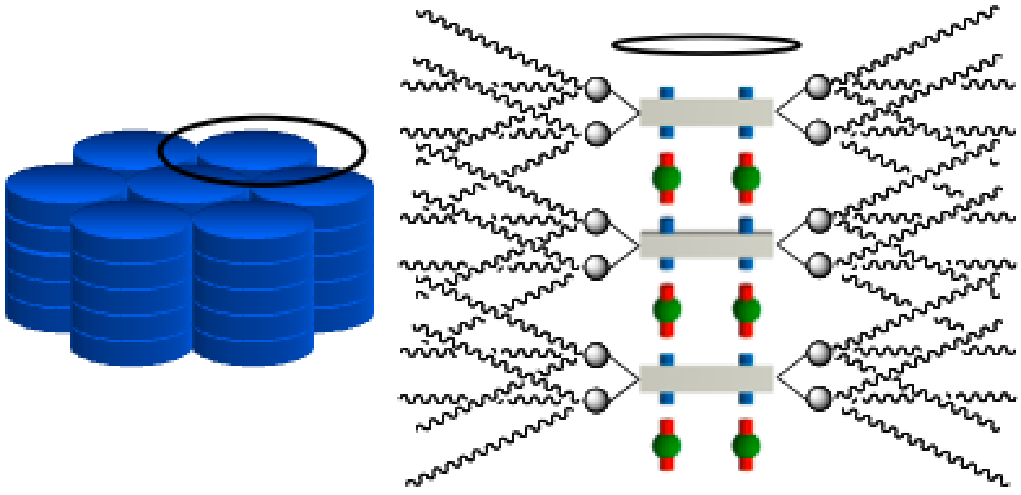 | 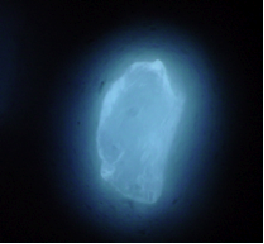 |
"Dipyrrin based silver [2+2] metallamacrocycles"
Dmitry Pogozhev, Stéphane A. Baudron, and Mir Wais Hosseini, Dalton Trans.,2011, 40, 437-445. (download.pdf).
Abstract:The synthesis and characterization of a series of [2+2] metallamacrocycles based on combinations of silver salts AgX (X = BF4−,PF6−, SbF6−, OTf−) with pyridyl, p-phenyl-pyridyl and p-phenyl-imidazolyl appended dipyrrin (dpm) derivatives is reported. In these species, the silver ion is linearly coordinated to one of the two pyrrolic groups of the dpm moiety through the nitrogen atom and to a N atom belonging to the peripheral coordinating group. The organisation of the cyclic complexes in the solid state is dependent on the nature of the anion X− and on the hydrogen bonding patterns formed with the pyrrolic NH group, acting as a donor. Furthermore, in some cases, d10-d10 argentophilic interactions are observed between consecutive macrocyclic complexes in the crystalline phase. The robustness of some of the complexes obtained compounds was investigated by 1H- and 13C-NMR spectroscopy which revealed the structural integrity of the cyclic species in solution. A DOSY NMR study on the cyclic entity based on the imidazolyl appended dpm further assessed that the complex present in solution was indeed the [2+2] metallamacrocycle.
 | 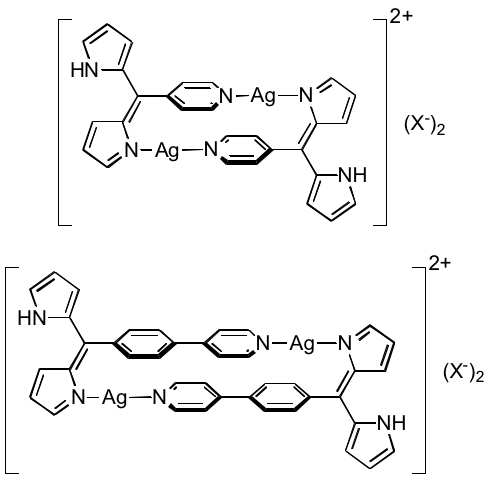 |  |


